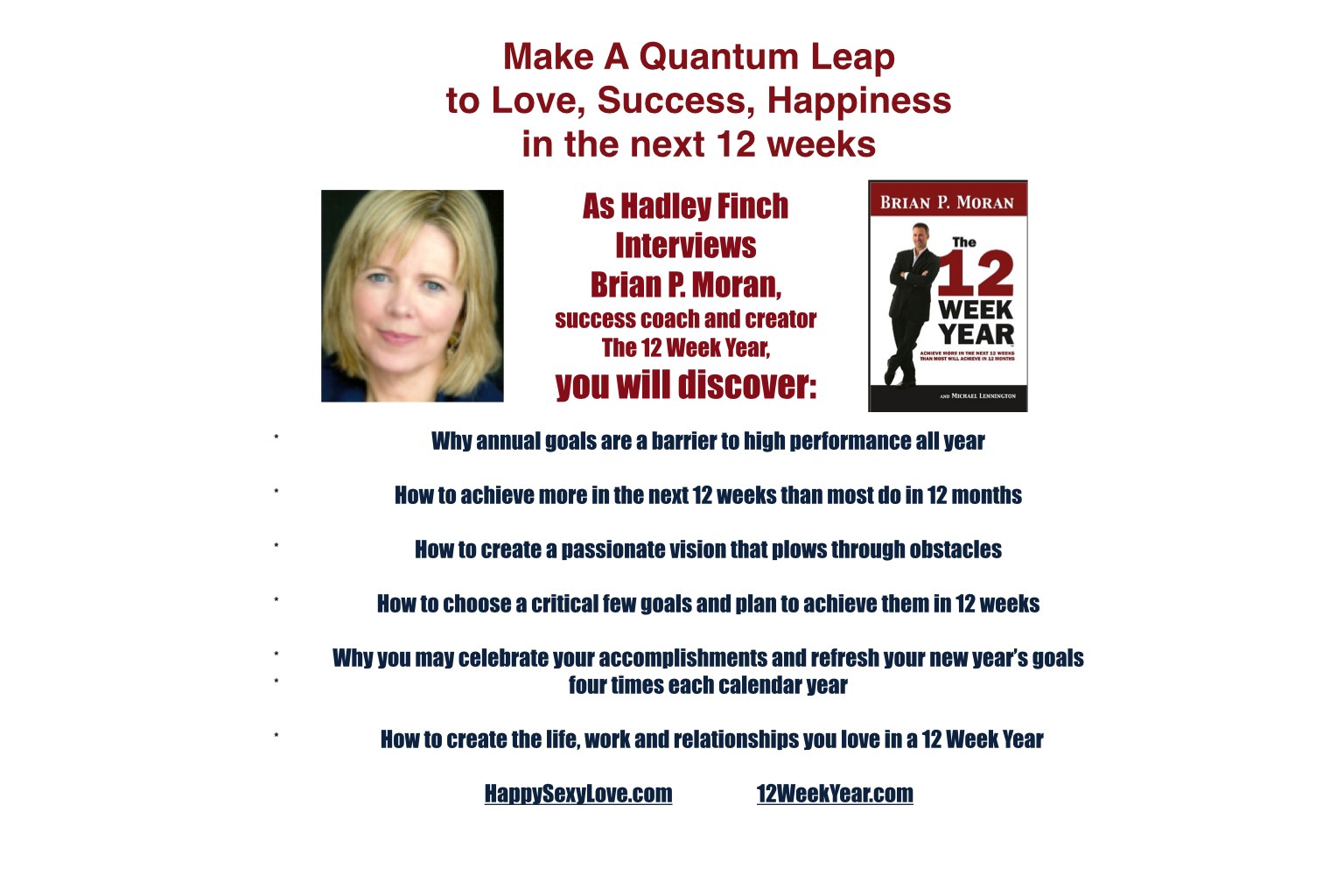
Your Quantum Leap To Love, Success, Happiness
in a 12 Week Year
Hadley Finch Interviews Brian P. Moran
TRANSCRIPT
Hadley: Now you’ll find out how to make a quantum
leap to love, health, success, happiness in the
next 12 weeks, instead of 12 months.
In business, December traditionally is the best
month of the year, because of the year-end push to
fulfill annual goals.
What if annual goals were a barrier to high
performance all year?
What if a year were no longer twelve months but
twelve weeks, and the excitement, energy and focus
of the year-end push now happens continuously?
Now you can achieve more in the next twelve weeks
than most will achieve in a year.
You can celebrate your success and refresh your
focus on New Year’s goals every twelve weeks, when
you begin to use the simple success system you’ll
discover during my conversation with Brian P.
Moran.
Brian is a corporate executive, entrepreneur and
success coach who has guided strategic
breakthroughs in individuals and in Fortune 500
companies for twenty five years. Brian also
designed the life-changing system you’re about to
discover, known as The 12 Week Year.
Welcome to A Lasting Love, Brian P. Moran.
Brian: Hey, Hadley. Thanks for having me.
Hadley: It’s my pleasure. We have so much to
cover. I feel like we’ve got to talk fast. Today,
we’ll reveal some success tools that add more
passion and excitement to every week, every day and
every moment.
We’re going to explain how to use winning business
strategies to build better relationships with
everybody in your life, and accomplish more of your
dreams and plans in twelve weeks than most will
accomplish in a year.
So Brian, how do we begin our 12 Week Year, right
now?
Brian: The first thing we’ve got to do is get out
of an annual environment. You touched on it in
your intro, Hadley.
Most people set goals in the context of twelve
months. They may break them down quarterly and
monthly, but there’s still this notion of it’s from
January through December.
The challenge with that, and one of the things that
gets in the way of that, is our thinking around
that. We call it, “annualized thinking.”
The heart of that is this notion that there’s lots
of time in a year.
In January, December looks a long way off, so it’s
really easy to put off things and put the
activities off another day or week thinking, “I’ve
got fifty more weeks or forty five more weeks, or
three more quarters.” Whatever it may be, there’s
a mindset there.
So the first thing is to get out of that annualized
thinking, and then really focus in on the next
twelve weeks as the year.
Because what happens is we behave differently at
the end of the year than we do in the middle of the
year. The reason is there’s a deadline.
For most of us, it’s December 31st. It’s an
arbitrary deadline, in the sense that everyone buys
into it, but it’s just a deadline that’s out there.
What we found is when we remove that and bring it
closer, and we make the end of March, for instance,
the deadline, the line in the sand, then this
creates a sense of urgency and a sense of clarity
around what matters most, that just doesn’t exist
in an annual environment.
Hadley: It’s a sense of excitement, too. That
brings me up to my next point.
You’ve written that if you’re lacking passion in
your relationship or in your business, it is not a
crisis of passion. It’s a crisis of vision.
Will you tell us how to create a vision that’s so
powerful, we’ll leap over any obstacles that stand
in our way of achieving it.
Brian: You bet. If you think about things you’re
passionate in, it’s because there’s a vision there.
That’s why I say, “It’s not a crisis of passion.
It’s a crisis of vision.”
How you create a powerful vision that will help you
leap over obstacles is really:
The first thing is you’ve got to connect the most
with it. It’s got to be a positive connection, an
emotional connection in your soul about what you
desire.
The more compelling that is, the more real that is,
the more emotion behind it, then the more powerful
that vision is.
People who have a powerful vision like that, kind
of bull doze through the obstacles.
It’s not that it erases the obstacles. It’s just
in a sense makes it where they don’t matter,
because you’re going to find a way through them,
around them, over them, under them.
So the first piece is making sure there is an
emotional connection, that you tap into what you
really desire, that there’s a strong, compelling
desire there.
Once we have that, the key is to stay connected
with it.
It’s envisioning the future the way you want it.
Seeing it in your mind’s eye, if you’re visual.
Feeling it, if your kinesthetic. Using the words,
if you’re auditory.
It’s connecting with it in every sensory way that
you can. The more sensory rich it is, the more
powerful it will be.
So connecting with that daily, going back to sort
of mentally standing that ground, and seeing
yourself where you want to be: Living that
vision. Standing in that vision, however it looks
like. That your relationships look this way. How
does that feel?
Hadley: I’m remembering that Arnold Schwarzenegger
said in 1976 that this is how he planned to be the
number 1 box office star in America.
He said, “What you do is create a vision of who you
want to be, and then live into that picture, as if
it already were true.”
And you’re saying also: Just add all of your
sensory perceptions, so that you’re living it,
you’re feeling it, you’re giving thanks for it,
you’re enjoying it already, before it’s even
happened. Then your brain gets behind it and makes
it all happen.
Brian: Yes. Otherwise, what happens is it’s
always out there in the future. So you need to
bring it into the present. That’s what Arnold was
talking about. Otherwise, you never get there.
At some point, if I say to myself, “I want to be
this loving man, this loving husband,” at one level
this says, “I’m not that, currently.”
As long as I continue to live into that, I’ll never
get there. So I’ve got to change that
conversation. That vision has to be I AM.
Hadley: I AM is important. You already are these
things, and you’re just more and more of them every
day.
Brian: Exactly.
Hadley: I love that. Let’s say we have a clear,
powerful vision, then we need a plan to get there.
Some of us spend more time planning for a vacation
than planning for greater love and success. Tell
us how we develop our plans to achieve our best
dreams in the next twelve weeks.
Brian: The first thing we’ve found is: Less is
more.
That’s one of the oxymorons in life. We’re all
sort of encouraged by society to want it all.
There’s nothing wrong with that.
But when we try and have it all at one time, it’s
diffusing, and it can be very frustrating.
Our experience is, our recommendation is: Let’s
focus in on a couple areas.
So once we’re clear on what that vision looks like,
let’s pick one to maybe three areas that we really
want to bring near term in the next twelve weeks.
Establish some solid goals. Then build some
actions around them.
When we talk about the actions, Hadley, it’s not a
laundry list of all the things you could do. It’s
what we call a “critical few.”
Of all the things you could do, what are the three
or four actions that are going to have the greatest
impact in the area that you want to achieve?
It’s spelling those out in a way that defines what
it is you need to do—what actions you need to take
on a daily basis or a weekly basis for each of
those goals. That’s why less is more.
It’s having that focus where there’s just a couple
areas that we’re really trying to move the needle
in. As opposed to trying to move the needle in ten
different areas, where we’ll end up diffused or end
up mediocre at best.
Let’s be great in a few areas, versus mediocre in
many.
Hadley: I like that. That makes a lot of sense.
We plan for the future, but we implement every day.
So if we’re going to be great in a few areas, how
do we take the best actions every day to be great
in those areas and make our vision come true?
Brian: That’s a great question. It’s a critical
one, because in the end we have greater control
over our actions than we do over our outcomes.
It’s our actions that create our outcomes.
So the first piece is going back to the planning we
just talked about: Being very clear on what those
actions are.
If you want something you don’t currently have,
you’re going to have to do something you’re not
currently doing.
More than likely, if you want to create something
in your life you don’t have, those actions are
going to be things you haven’t done before, or you
haven’t been consistent. Those will create some
discomfort for you on a daily or weekly basis.
Hadley: Get out of your comfort zone to actually
make some positive changes.
Brian: Absolutely. In the moment it’s hard.
Because in the moment, the tendency is that we’re
all wired for comfort, so we choose the things
we’re familiar with. We choose the things that are
comfortable.
New activities have some risk. There’s the fear of
the unknown. There’s the discomfort of doing
something that you’re not really good at yet.
So it’s having that clear plan, and then having it
written.
You take that twelve week plan, and now you look at
it on a weekly basis. You say, “Of this
twelve-week plan, what are the things that I’ve got
to do this week?”
That’s your road map for the week. Every day, you
check in with it and say, “Was I faithful doing
these things?”
If I’m trying to build a relationship with my wife,
in my example, did I do the things that were in my
plan for that relationship?
Or did I choose to do the easy things, like come
home and just turn on the TV and plop on the couch?
So it’s having that clearly in front of me, and
monitoring it day in and day out. “Am I doing
those things? Or am I choosing other things? If
I’m choosing other things, why?”
That’s also why having a compelling emotional
vision is important. Because when I’m choosing
those other things, I’ll feel the pain of that.
I’ll feel the pain of disconnect from the life I
want to live.
Hadley: I often say that there’s a relationship
compass, and it keeps you on the happiness track.
We’re here to experience pleasure and joy and love.
Anything that takes you away from that, you know
you’re getting off track.
So keep your eye on your inner truth detector, your
inner feeling. Are your choices making you feel
better? Are they good for your well being? If you
can stay on the path like that, then you know
you’re on the right track.
Brian: I like that. I kind of use the notion, “Is
it bringing out the best in me? Are my activities
and my vision bringing out the best in me? Are
they demanding the best in me in whatever area I’m
applying it?”
Hadley: I like that, too. This also takes a
commitment. Let’s talk about if we’re committed to
being great, or to excellence.
Tell us about the four successful keys of how to
fulfill a commitment. Let’s refresh everybody’s
memory. You’ve talked about some of them. Let’s
talk about all four keys right now.
Brian: There’s a big difference between interest
and commitment:
When we’re interested, we deal with circumstance.
When we’re committed, we make it happen. Those
four keys are critical.
The first key we’ve touched on with vision.
It’s a strong desire. If the desire’s not strong,
if it’s not compelling, then I’ll do it when
circumstances permit. Again, that’s being
interested.
Hadley: If it’s a strong why, it seems like the
how just manifests.
Brian: It does. That’s why we’re talking about
that why.
“Why am I willing to do this? Why am I willing to
be uncomfortable? Why am I willing to step on new
ground that’s unfamiliar? Why am I willing to try
some new things?”
Without that, the rest of it breaks down. So
that’s the first step.
The second step we talked about in the planning.
It’s getting very clear on the actions. “What are
the things that are really going to drive the
success I’m looking for?”
Choose the critical few. You don’t need a lot of
them, just the powerful ones.
The third key is to count the costs.
This is an area where a lot of people get tripped
up. This is where New Year’s resolutions break
down.
People say, “I want to lose weight.” Or “I want to
improve this relationship.” But they never really
count the costs.
What I mean by that is: To be great takes
sacrifice.
“What am I going to sacrifice? What will I have to
give up? What will I have to do less of? What am
I going to have to do more of? What are the
costs?”
So if I want to improve my relationship, I’m going
to have to plan some things to do with my wife.
I might have to do some things she likes, that
maybe I’m not all that fond of initially.
Those are some of the costs that I would need to
look at—the emotional costs, the physical costs.
I might have to spend some money on a trip.
Whatever it may be. What are the costs of taking
that action consistently?”
Hadley: I look at that as making an investment
that brings great rewards.
So it’s more instead of costs, like you’re losing
it, you’re investing in something that’s really
going to give you great benefits.
Brian: I agree with that, but I have to be willing
to make that investment. I have to be willing to
make a trade off in the moment.
Hadley: True.
Brian: What I don’t want to do is not have thought
through it, and then be surprised with it in the
moment.
Hadley: Okay.
Brian: Probably the best example I could give is:
If I were looking to get in shape, one of the
costs is I’m going to have to get up in the morning
and get out of bed.
I don’t want to have to make that decision in the
morning when the alarm goes off, and the bed’s
warm, and it’s cold outside. I want to look at
that before, and decide, “Am I willing to pay that
cost?”
One of the great things about The 12 Week Year is:
I’m not saying I’m going to pay that cost for a lifetime
or even twelve months. I’m committing to 12 weeks.
Hadley: That’s doable. You can see the finish
line ahead of you, and that’s exciting.
Brian: Yes. That’s the breakthrough, isn’t it?
Hadley: Right.
Brian: You can say, “I can do anything for twelve
weeks.”
Then at the end of those twelve weeks, I’m going to
assess and maybe sign up for another commitment, or
maybe I move on. This leads us to the forth key.
The forth key is to act on your commitments and not
on your feelings.
All of your listeners know there are days when you
just don’t feel like doing it.
But what separates mediocre from great is: You do
it anyway—even on the days and times you don’t feel
like it.
It’s building support systems around you, whether
that’s a buddy, whether it’s going back to that
plan and looking at it and checking on it daily and
weekly.
Just make the decision that, “No matter how you
feel, you’re going to take that action.”
Hadley: This is good. What I want to talk about
next is some success tools that we can use each day
to create a habit of success.
Aristotle said, “We are what we repeatedly do.”
That means that success isn’t an act, but it’s a
habit. We want to get in the habit of using these
tools. Tell us the tools we need and the habits we
need to create.
Brian: I love that quote. A friend of mine says,
“Successful people aren’t successful part of the
time. Successful people are successful all of the
time.”
It’s really using tools and things you have
available to you to help you be your best, day in
and day out.
Part of that would be the plan you create, using
that on a daily or weekly basis.
Most people write a plan, and it sits there
collecting dust. Having a plan is worthless unless
you implement it.
The only reason we write a plan is to help us
implement and to know what to do.
So do more than just create the plan. Make it a
living document or piece of paper that goes with
you.
My plan goes with me everywhere I go. Because I
know if I execute the things in my plan, I’m
standing the ground. I’m living the life I want to
live.
I know that at the end of twelve weeks, I’m going
to be where I want to be, which is aligned with my
long term vision.
So there’s a clear sense for me, a clarity around
what matters most. Then with a 12 Week Year,
there’s a sense of urgency to do it.
In addition to that, another tool at the end of
that week is creating a “success score card.” It’s
measuring two things.
One would be my execution, or my implementation.
“Did I do what was in my plan?”
That’s probably the most effective measure, because
that’s what we have the greatest control over.
“Did I take the actions that I said were really
important this week?”
The second piece of the “success scorecard” is
measuring my progress in terms of results.
“Did I execute it? Yes or no? What kind of
results did I get? Did I see some movement in the
area I’m working on?”
Whether it’s working on relationships or weight
loss, whatever it may be, it’s tracking the
progress I’m making along the way.
So the “success scorecard” is really critical.
That’s the feedback mechanism, if you will, that
allows you to make game time adjustments.
Even in a 12 Week Year, things change.
Some things you will come up with in your plan,
your activities will be spot on. They will work
the way you thought they would.
Others aren’t going to. The only way you know is:
You have to execute it, and then measure it.
Hadley: It’s good to write down your successes,
because what you focus on grows. Success promotes
success. If you’re focused on that, you’ll keep
doing more of that.
In fact, there’s a acronym for FOCUS. Follow One
Course Until Successful.
That’s what you’re guiding people to do for twelve
weeks: To follow this one course of this plan
until successful.
Brian: Absolutely. I like that. Because there’s
a tendency for being goal oriented is: We never get
there. Because as soon as we get there, there’s a
new there.
So it’s really recognizing the progress you’re
making—not only in your results but also in your
character as you learn to be great in the moment
and do the things you need to do. That in and of
itself is “success.”
The results will come. If we’re great in the
moment, we can’t help but see that in results down
the road. But so often, results lag:
I do this activity today, but I don’t necessarily
get results today. It may be weeks before it shows
up. Oftentimes, Hadley, people give up on it too soon.
So it’s recognizing success in the moment and
celebrating that. It’s celebrating the progress.
It doesn’t have to be perfect. We just want to be
moving, moving forward, moving in the direction of
our vision.
Hadley: I totally support that. Success is in
taking the action, taking the steps on the journey
that leads to the destination. But the journey is
the joy.
Tell me about “Periodization,” which you wrote
about in your book. You focus on one skill at a
time.
Brian: That’s where The 12 Week Year concept came
from.
Periodization was an athletic training technique
developed in Eastern Europe in the 1970’s. It’s
still widely used today in a lot of sports,
endurance sports.
In athletics, what it does is focus on one
particular skill or discipline for a period of
time, usually four to six weeks.
We knew it had applicability to help people be more
successful.
That’s how we figured out that we need to get out
of this annual environment.
We need to narrow the scope and the time frame, so
that there’s a sense of urgency and clarity on what
matters most.
So periodization is just a word most people aren’t
familiar with. But that’s really what our process
is. It’s periodization in The 12 Week Year.
Hadley: So it’s like the FOCUS that we talked
about: Follow One Course Until Successful.
Brian: That’s it.
Hadley: That sounds good. The good news is that
we now know about The 12 Week Year. Yet there’s a
big difference between knowing and doing.
So Brian, if you will take a moment and give us a
quick checklist of things that we can do right now
to begin our 12 Week Year today.
Brian: I’m going to give you six things. That
sounds like a lot, but they’re very simple things.
I promise you that if you take these actions, it
will have an amazing impact:
The first is your vision.
Set some time aside and envision a future for you
that’s compelling. That’s the life you want to
live. Not a life that’s good, but a life that’s
great.
We’re going to be here in the future, so let’s make
it a great future.
Start by looking out three years and saying, “What
would a great life look like in all the areas that
matter?”
The second step is to bring that near term and
establish one to maybe three, at the most, twelve
week goals from that vision, so that those goals
are aligned with that vision.
So that you know if you’re where you need to be at
the end of twelve weeks, that you’re living that
vision.
The third step is to develop the plan for each of
the goals.
“What are the actions, the critical few actions to
achieve those 12 week year goals?”
Again, less is more. If you can accomplish the
goal with three actions, you don’t need four. If
you can accomplish the goal with four actions, you
don’t need five.
So you may have to brainstorm a bunch of them, and
then pick the ones that will have the greatest impact.
Hadley: This is all doable.
Brian: Yes. It’s all doable. It takes some
effort, but it’s doable.
Hadley: I like the thing about “dream big,” too.
Brian: That’s where it all starts, where all high
performance starts.
Hadley: Dr. Ornish proved that big changes are
easier to implement than little ones, when he was
trying to get people to change their lifestyle
after a heart attack.
Brian: That’s a great study, if people haven’t
seen that. They should google Dr. Ornish, and look
at that.
Hadley: Let’s go to number four.
Brian: Step four is execute weekly.
Don’t let the plan sit in a folder somewhere. Look
at it every week. Look at it every day. That
ultimately is what keeps you focused on executing.
No matter what else happens in the week, make sure
that those key actions that are in your plan take
place.
Hadley: Here’s one thing I’d like to add to that.
A great way to end the day is to reflect on the
successes and the strides and the progress you made
in the day.
So jot down those things in your plan. Pat
yourself on the back and say, “Good job,” every
day.
Brian: Absolutely. I like the notion of starting
and ending the day with something positive.
Hadley: Exactly.
Brian: I start the day with a little devotional.
We end the day, my wife and I, by lying in bed and
talking about, “What were the things that happened
today that were really great?”
That’s the way we end the day. It’s what you’re
saying, Hadley. Let’s review the day.
I like your notion of writing this down, keeping a
success journal.
Hadley: Yes. I want people to get in the habit of
focusing. What you focus on grows. Focus on love
and success, you will grow that in your life in
every moment.
Brian: I like the attitude of gratitude as well.
Otherwise, you lose sight of all the blessings that
you have and all the things that are working right.
Then we get anxious about the ten percent that
doesn’t work the way we want it to, and we lose
sight of the other ninety percent that is really
working great.
Hadley: I know. I agree. So what’s step five?
Brian: Step five is measure.
Use the “success scorecard” on a weekly basis.
Track, “Am I doing the things I said I was going to
do? What’s my progress?”
Step six is an easy one, but it’s often overlooked:
celebrate.
Celebrate the progress. Celebrate the success. If
nothing else with The 12 Week Year, you’ll have
three or four more times in the year to celebrate
your progress, at a minimum.
I encourage you to do it daily and weekly, as well.
Don’t wait till things are perfect. Don’t wait
till you’re there to celebrate it. Learn to
celebrate life.
Hadley: Celebrate joy in each moment.
There’s always something. Even in
challenging times, there always a joyful silver
lining, if you look for it.
Brian: I agree. So learn to celebrate those. So
those are the six steps.
Hadley: Do you have anything for someone who’s
single and looking for love? Do you have any
suggestion on using The 12 Week Year system?
Brian: Hadley, you have some great resources, so
that’s the first place I’d go.
Look to those resources to build my plan. So
figure out: “Where it is I want to be at the end
of twelve weeks?”
Then use some of the resources you have to help you
build your plan around that.
Go back to the things we’ve talked about. It’s
having a vision that brings out the best in you.
It’s looking for, “What is it that you want in a
relationship—where the relationship is really
thriving? And it’s passionate. And both parties
are engaged and loved and finding joy from it.”
Then it’s identifying the actions that are going to
drive that.
“What situations do you need to put yourself in to
meet those kind of folks? How do you foster those
types of relationships? How do you give in a way
that other people are attracted to you and want to
be around you?”
Hadley: We talked about this. I help people
become a love magnet, really by feeling healthy
self love and feeling gratitude. These feelings
attract love, like an irresistible love magnet.
Just doing this process and following the system
that Brian set out will transform your life in
wonderful ways.
Start implementing immediately, just transforming
your life right now. I’m excited for everyone to
do this.
Brian: I think you said something that is really
critical, “Starting right now.”
Don’t wait. The time is never just right. The
time to start is now, with where you are.
I see a lot of people wishing their situation was
different, and kind of waiting to start until
something’s different.
You are where you are. It is what it is. Just
start today. Don’t put it off. Too many diets
start on Monday, and then never start.
So if it’s important for you, start today.
You don’t need any tools to do some work on your
vision. You don’t need to wait till tomorrow or
this weekend. Take a few minutes right now.
Maybe you’re driving or you’re at home, whatever.
Take a few minutes to think about:
”Three years from now, what would a great life look
like? What would a great relationship look like?”
Hadley: Right. What great advice. On that note,
Brian P. Moran of the12weekyear.com I want to
thank you for your generous sharing of these
success tools and the system that we can use to
accomplish our annual plans, dreams and goals every
twelve weeks in our 12 Week Year.
Besides that, you can celebrate New Year’s Eve four
times a year, and you only age one year in the
whole process. So there’s a benefit there.
Brian: Yes. I’ll have to get a testimonial from
you.
Hadley: Thank you, Brian. I wish you many Happy
New Years this year.
Brian: Thanks for having me. It’s been my
pleasure.
Hadley: Good. Before I say, “Good-bye,” I’d like
to remind you that we used to make great things
happen at year end.
Now you have the success tools to make great things
happen continuously throughout the year. Greatness
begins by focusing on your twelve week plan and
using your success tools to make it happen.
You can find love and make your relationship a ten
out of ten every week, when you use the right
tools, including
My 6-Step Plan For My 12 Week Year:
Step 1. Envision my best future, my best life I
want to live. Dream Big.
I’ll consider my love life, my work life, my
finances, my health, my spiritual life, my
relationships with friends, family, coworkers,
children, my hobbies or activities I love and want
to do more of.
I’ll start by answering these questions:
* What does my best future look like in three years,
in all areas that matter most to me?
* What excites me most about my best future?
Step 2. Based on my vision of my best future in
three years, I’ll choose my top one to three
near-term goals that I will accomplish in the next
twelve weeks. Less is more.
In the next twelve weeks, I will accomplish my top
one to three goals that are aligned with my vision.
I know I am living my vision, when I am doing these
things for the next twelve weeks:
Step 3. Develop my action plan for each of my top
three goals.
Answer this question: “What are the actions, the
critical few actions I will take each week to
achieve my 12 week year goals?”
Less is more. If I can achieve it in two actions
each week, I won’t list three. I’ll list my top
few actions in each area now:
In my goal number one, I will take these key
actions each week for twelve weeks:
In my goal number two, I will take these key
actions each week for twelve weeks:
In my goal number three, I will take these key
actions each week for twelve weeks:
Step 4. Execute weekly for the next twelve weeks.
I will check my action plan every day, and every
week to stay focused on executing my plan.
No matter what else happens during the week, I’ll
make sure that I am doing the critical few key
actions I need to take to live my vision.
I’ll take my action plan with me when I travel and
look at it often to remind myself what key actions
I will take every day, every week for the next
twelve weeks.
Step 5. Measure my progress each week.
I’ll create a “Success Scorecard” for each week in
my 12 Week Year which tracks:
“Am I doing each day and each week what I planned
to do? What is my progress? What new things are
showing up in my life because of it?”
To create my Success Scorecard, I define “Success”
as my forward progress in my actions to live my
vision for my ideal life.
I’ll note the actions I take each day, each week
for twelve weeks according to my plan:
I’ll note how I feel when I take these actions and
the new results that are showing up in my life
because of it:
I’ll note actions I missed, but plan to take next
week:
I’ll note actions I missed, because I decided they
no longer were important to propel me to the life
of my dreams.
Step 6. Celebrate My Progress. Celebrate My
Success Now.
I see and celebrate joy that can be found in each
moment, even in challenging times, by:
I see celebrate my forward progress each day, each
week by:
I will celebrate New Year’s Eve at the end of my 12
Week Year by:
The day after my 12 Week Year ends, I will
celebrate my New Year’s Day by:
I will keep doing what works and stop doing what
doesn’t work, as I begin my next 12 Week Year by:
***********************
Use your blueprint to create happy, sexy love that lasts,
Hadley Finch
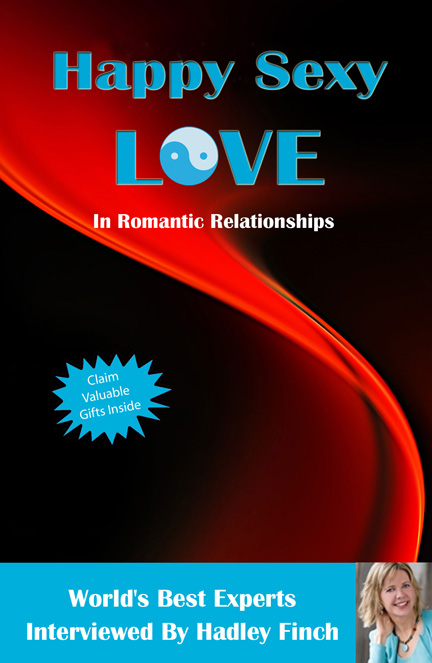
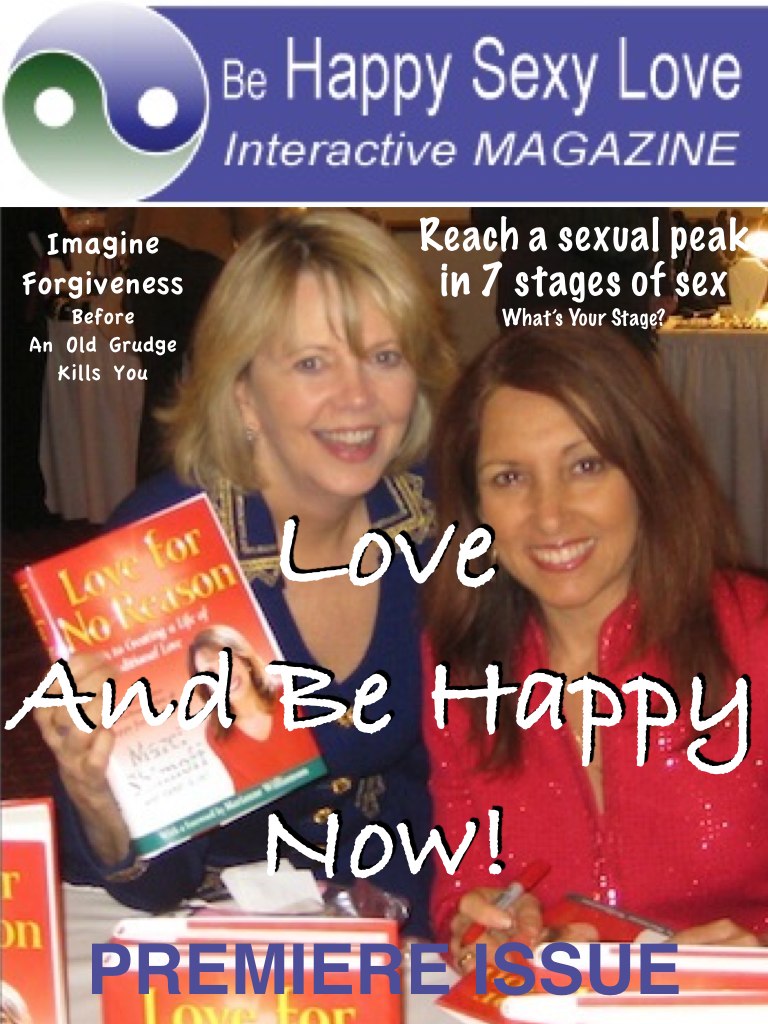
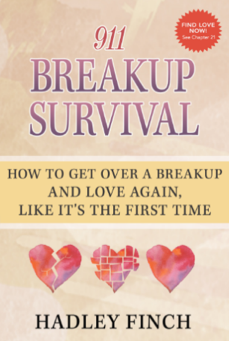
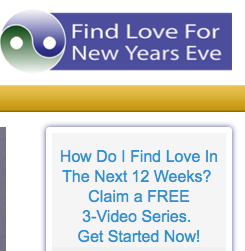
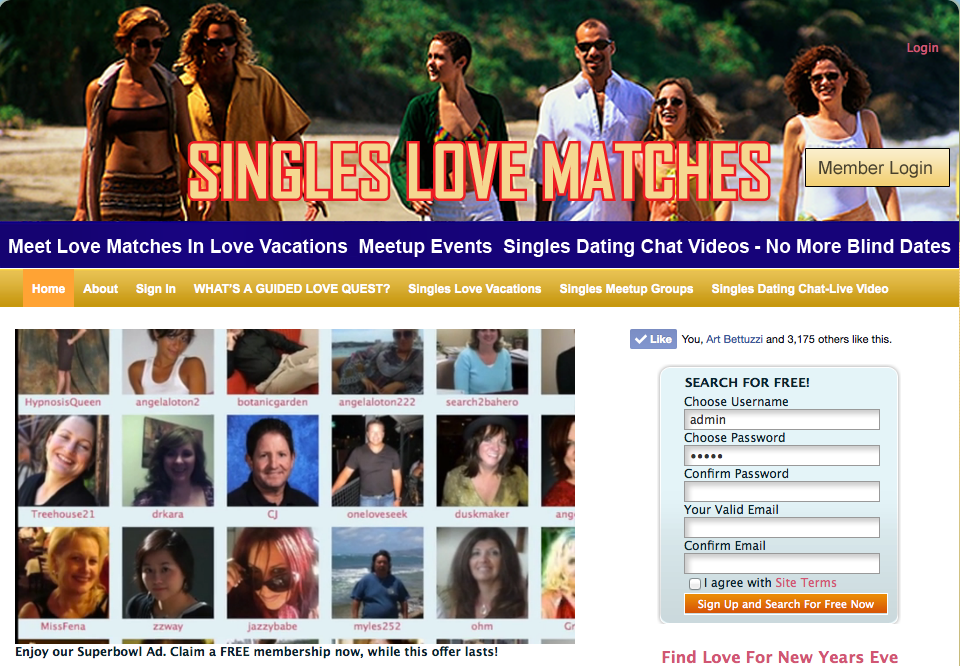


MY NOTES:
 Happy Sexy Love How to bulletproof relationships with happy, sexy love
Happy Sexy Love How to bulletproof relationships with happy, sexy love